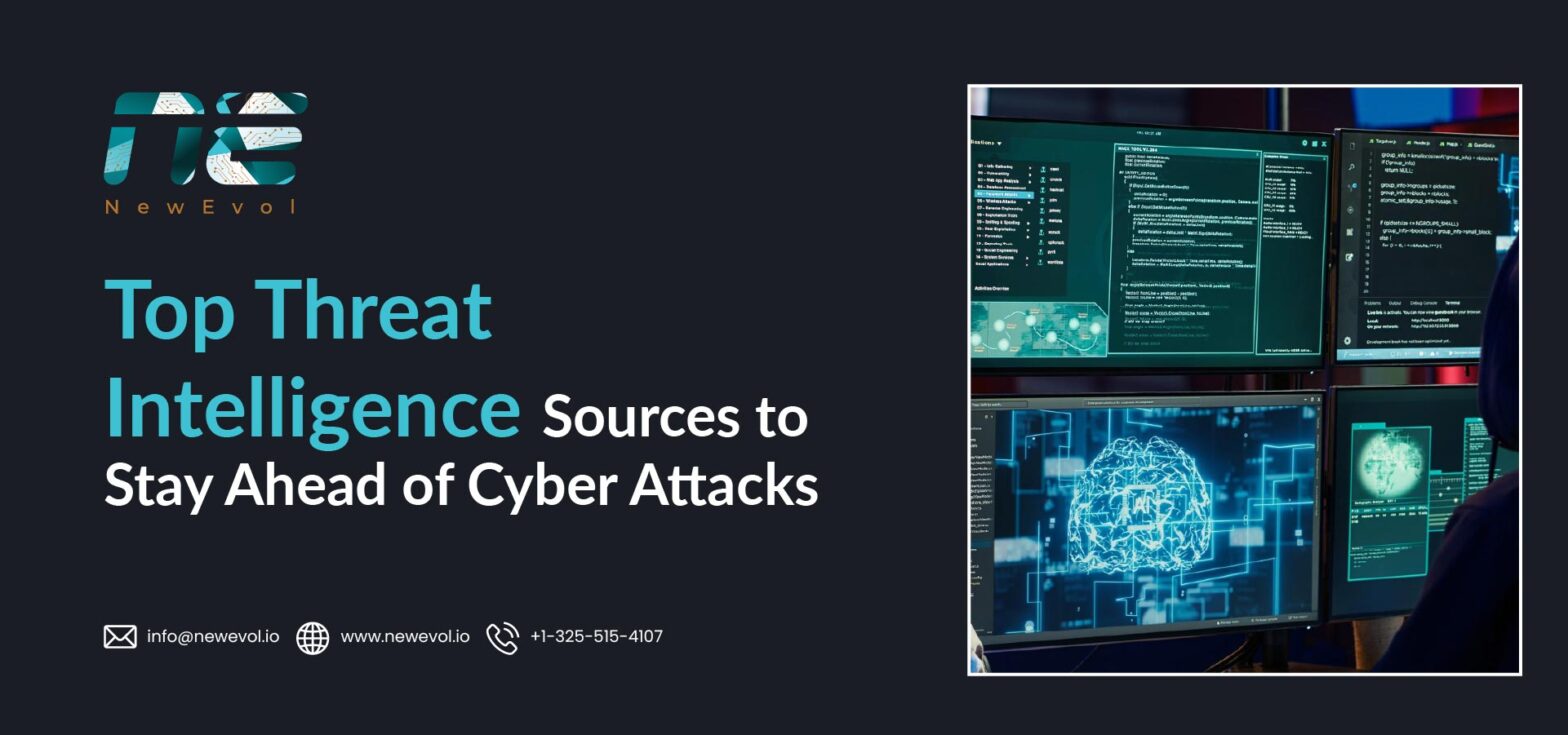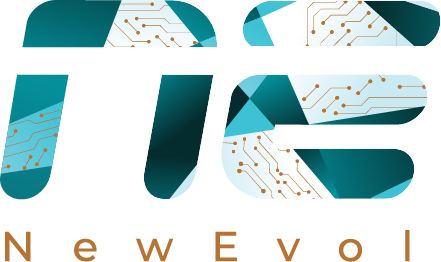Top Threat Intelligence Sources to Stay Ahead of Cyber Attacks

In Malaysia’s rapidly digitalising economy, cybersecurity has become a top national and business priority. Financial institutions, telecom providers, manufacturing giants, and government agencies are accelerating their digital transformation — but this growth also brings an expanding attack surface. Malaysia experienced a 35% increase in cyber incidents in 2024, driven by phishing, ransomware, and supply chain attacks.
From phishing campaigns and ransomware to supply-chain intrusions, the threats are evolving faster than traditional defenses can adapt. Staying ahead requires threat intelligence — actionable insights that transform raw data into foresight.
But with so many feeds, sources, and platforms available, how can Malaysian organisations choose the right ones? This article explores:
- The role of threat intelligence in modern cybersecurity,
- The top global and regional threat intelligence sources, and
- How NewEvol delivers an adaptive, AI-driven threat intelligence ecosystem for Malaysian enterprises.
Why Threat Intelligence Matters More Than Ever
Threat intelligence (TI) is not just about collecting indicators of compromise (IoCs) — it’s about understanding who, why, and how behind every attack. In Malaysia’s context, threat actors often target sectors with high data value or national significance: banking, energy, critical infrastructure, and government services. The ASEAN region faced over 280 million cyberattacks in 2024, with Malaysia among the top three most frequently targeted countries.
According to industry studies, over 60% of Malaysian organisations experienced at least one cyber incident in the past year. The average dwell time — how long attackers remain undetected — is still too high, often measured in weeks.
Threat intelligence helps bridge that gap. It empowers security teams to:
- Anticipate attacks before they strike.
- Correlate data across logs, endpoints, and networks for faster detection.
- Inform response decisions with context — attacker motives, techniques, and history.
- Strengthen defenses based on evolving global and regional threat trends.
The ultimate goal: transforming your SOC from reactive to predictive.
Types of Threat Intelligence Sources
Before listing the top platforms, it’s important to understand the categories of threat intelligence sources commonly used in SOCs and CERTs across Malaysia:
1. Open Source Intelligence (OSINT)
Freely available public data — including feeds from government, research labs, and community projects — that provide early warnings and IOCs.
2. Commercial Intelligence Feeds
Paid subscriptions that deliver curated, high-confidence threat data, often enriched with behavior analytics and attribution details.
3. Industry and Regional Sharing Groups
Collaboration forums such as the Malaysia Cyber Security Network (MyCERT), APCERT, and sector-based ISACs that share localised intelligence.
4. Internal Intelligence Sources
Logs, alerts, and telemetry generated by your own infrastructure, SIEM, and endpoint tools. These form the foundation for custom analytics and hunting.
5. Integrated Threat Intelligence Platforms (TIPs)
Platforms that aggregate, normalise, and analyse data from multiple sources — converting it into contextual, actionable intelligence for your SOC or SIEM.
Top Threat Intelligence Sources
Here’s a look at some of the leading global and regional threat intelligence sources that Malaysian organisations can rely on to enhance their visibility and resilience.
1. MITRE ATT&CK Framework
A globally recognised framework mapping adversary tactics and techniques. It helps SOC teams identify attacker behaviour patterns and strengthen detection strategies.
Best For: Building detection rules, analysing adversary behaviour, improving response playbooks.
2. VirusTotal Intelligence
Owned by Google, this platform aggregates data from antivirus vendors and security researchers worldwide. It provides file, domain, and IP reputation insights.
Best For: Malware analysis and URL/domain reputation checks.
3. AlienVault Open Threat Exchange (OTX)
A large open-source community sharing threat indicators, TTPs, and real-time attack data.
Best For: Real-time community-sourced IOCs and malware signatures.
4. IBM X-Force Exchange
A commercial platform combining global threat data with analytical insights from IBM’s research teams.
Best For: Enterprise-level threat enrichment, correlation, and predictive insights.
5. Recorded Future
An intelligence platform using machine learning to deliver contextual, real-time insights from open, dark web, and technical sources.
Best For: Threat hunting, risk scoring, and actor attribution.
6. Malaysian National Cyber Coordination (MyCERT / CyberSecurity Malaysia)
The national CERT offers advisories, vulnerability alerts, and local threat intelligence feeds specific to Malaysia and Southeast Asia.
Best For: Local threat context, regional advisories, and incident response support.
Why Global Feeds Alone Aren’t Enough
While global threat intelligence sources are powerful, they often lack regional context. Attackers operating in Southeast Asia use different infrastructure, language cues, and tactics. For example:
- Phishing domains are often hosted on local ISPs or mimic Malaysian banking brands.
- Threat actors may exploit region-specific regulatory systems or payment gateways.
- Campaigns might be timed with local events or government announcements.
This is where context-aware, AI-driven platforms like NewEvol become essential — fusing global data with regional behaviour analytics.
NewEvol Threat Intelligence – Context that Powers Action
Traditional threat feeds are static; they tell you what happened. NewEvol’s Threat Intelligence platform tells you why it happened — and what’s next.
1. Unified Threat Intelligence Ecosystem
NewEvol consolidates multiple threat data streams — open-source, commercial, dark web, and internal telemetry — into a single, AI-powered ecosystem. This unified data model eliminates silos and gives analysts complete visibility across their attack surface.
2. Machine Learning & Contextual Analytics
Using advanced ML algorithms, NewEvol correlates indicators, behaviours, and contextual cues from millions of records. It identifies emerging threats early and prioritises them based on real-world risk — helping Malaysian SOCs focus on what truly matters.
3. Real-Time Threat Correlation
NewEvol continuously ingests and enriches data from SIEMs, EDRs, and firewalls. This enables correlation between global intelligence and local telemetry — ensuring that a global alert becomes an actionable insight within your SOC.
4. Regional Adaptability
Designed with global scalability but regional adaptability, NewEvol supports integration with MyCERT feeds, regional threat exchanges, and regulatory requirements under Malaysia’s PDPA and Bank Negara guidelines.
5. Seamless SIEM & SOAR Integration
Unlike standalone threat feeds, NewEvol’s threat intelligence integrates natively with SIEM and SOAR modules. The result: faster detection, automated enrichment, and guided response workflows that align with your SOC operations.
6. Actionable Insights, Not Just Data
Every indicator in NewEvol is enriched with attribution (actor, motive, source), TTP mapping (MITRE ATT&CK), and relevance scoring. SOC analysts can instantly assess severity and automate decisions — turning intelligence into immediate defense.
Benefits for Malaysian Organisations
By adopting NewEvol’s Threat Intelligence capabilities, enterprises across Malaysia can expect:
- Early warning of region-specific threats through continuous data correlation.
- Reduced investigation time with automated enrichment and contextual prioritisation.
- Improved compliance alignment with PDPA and sectoral security frameworks.
- Smarter incident response powered by real-time, AI-driven insights.
- Seamless SOC integration across SIEM, SOAR, and case management systems.
Building an Intelligence-Driven Security Culture
Technology alone isn’t enough. Malaysian organisations must combine platforms like NewEvol with a strong intelligence-sharing culture. Establishing partnerships with national and regional bodies such as MyCERT, APCERT, and industry ISACs enhances collaboration and response speed.
Regularly training SOC teams on threat hunting, MITRE ATT&CK mapping, and adversary emulation ensures that your intelligence translates into proactive defense.
When every analyst, process, and system is connected through a unified threat intelligence framework, cybersecurity becomes not just reactive — but strategic.
Conclusion
In an era where attackers are faster, stealthier, and more coordinated, staying ahead requires intelligence that sees beyond alerts. Malaysia’s digital future depends on cybersecurity ecosystems that are predictive, contextual, and adaptive.
Platforms like NewEvol lead this transformation — integrating machine learning, automation, and regional awareness into a single intelligence fabric that empowers SOCs to defend before damage occurs.
Whether you’re a bank, telco, or critical infrastructure operator, NewEvol ensures your defense is one step ahead — turning intelligence into foresight, and foresight into action.
FAQs
1. What are threat intelligence sources?
Threat intelligence sources collect data on attackers, campaigns, and vulnerabilities to help security teams anticipate and prevent cyber threats.
2. Why is threat intelligence important for Malaysia?
Malaysia faces region-specific cyber threats — threat intelligence helps identify and mitigate these before they cause harm.
3. How does NewEvol improve threat intelligence?
NewEvol unifies multiple feeds, applies machine learning, and delivers contextual insights, enabling faster, more accurate detection and response.
4. Can NewEvol integrate with existing SOC tools?
Yes. NewEvol seamlessly integrates with SIEM, SOAR, EDR, and third-party systems to create a cohesive intelligence ecosystem.
5. Is NewEvol suitable for regulated industries in Malaysia?
Absolutely. NewEvol supports compliance with Malaysia’s PDPA, Bank Negara cybersecurity guidelines, and other industry standards.

